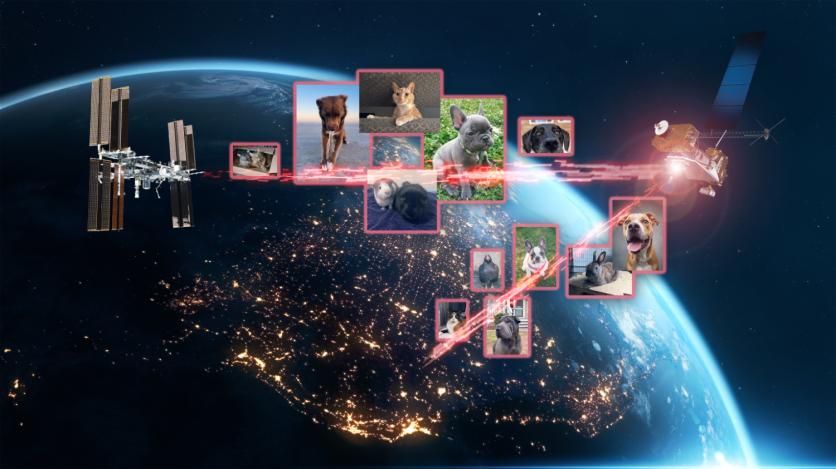NASA's first two-way and end-to-end laser relay system can send cute pets to space, although not physically.
Hooman astronauts Randy Bresnik, Christina Koch, Kjell Lindgren, and other NASA personnel participated in this cute initiative, sharing snapshots and footage of their furry friends for the journey to and from the International Space Station (ISS).

NASA Hoomans Send Cute Pet Images To and From Space
The transmission showcased NASA's Space Communications and Navigation (SCaN) program's prowess in laser communications, demonstrating the technology's capabilities while exploring new networking methods.
Kevin Coggins, NASA's deputy associate administrator and SCaN program manager, highlighted the project's multifaceted success, claiming that it could advance future space missions while offering a lighthearted opportunity for team members to involve their pets in the demonstration.
Inspired by "Taters the Cat," whose video traveled an impressive 19 million miles via laser links to the Deep Space Optical Communications (DSOC) payload on the Psyche mission, this project aligns with NASA's broader initiatives in laser communications, including the Laser Communications Relay Demonstration (LCRD), DSOC, and ILLUMA-T.
During a demonstration last month, these pet images and videos began their journey at a mission operations center in Las Cruces, New Mexico, before being routed to optical ground stations in California and Hawaii.
Using infrared light signals or lasers, the data was transmitted to LCRD in geosynchronous orbit, which was subsequently relayed to ILLUMA-T aboard the ISS.
Unlike traditional radio frequency communications, which have been the mainstay of space missions, laser communications leverage infrared light to transmit information. According to NASA, infrared's ability to pack more information onto a signal offers higher efficiency and data transfer rates.
Moreover, this endeavor enabled NASA to test Delay/Disruption-Tolerant Networking (DTN) protocols, essential for transmitting data across vast distances in space. The DTN "store-and-forward" approach ensures data integrity and reliability, which is crucial for long-distance space communications.
Read Also : NASA's Psyche Spacecraft Delivers 'First Light' Images as It Travels to a Metal Asteroid in Darkness
Pet Imagery Campaign
To enhance DTN's capabilities, NASA developed High-Rate Delay Tolerant Networking (HDTN), which enables faster data transfer speeds, up to four times faster than current technology. According to NASA, HDTN aggregates data from various sources, facilitating efficient transmission and reception aboard spacecraft.
With applications ranging from improving security to enabling high-definition multimedia transmission, HDTN holds promise for enhancing space communication networks, paving the way for NASA's Artemis campaign and its mission to establish a sustained presence on the Moon and beyond.
As NASA continues to push the boundaries of space exploration, advancements in communication technology, such as laser relay systems and networking protocols like DTN and HDTN, are expected to play a vital role in future space missions.
"The pet imagery campaign has been rewarding on multiple fronts for the ILLUMA-T, LCRD, and HDTN teams," Coggins said in a press statement.
"Not only have they demonstrated how these technologies can play an essential role in enabling NASA's future science and exploration missions, it also provided a fun opportunity for the teams to "picture" their pets assisting with this innovative demonstration," he added.
Related Article : NASA's Psyche Spacecraft Fires Laser 10 Million Miles Away From Earth as It Heads Toward Mysterious Metal Asteroid

ⓒ 2025 TECHTIMES.com All rights reserved. Do not reproduce without permission.




